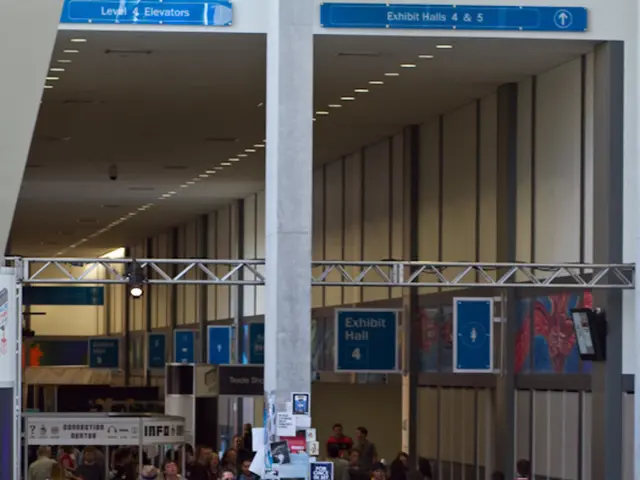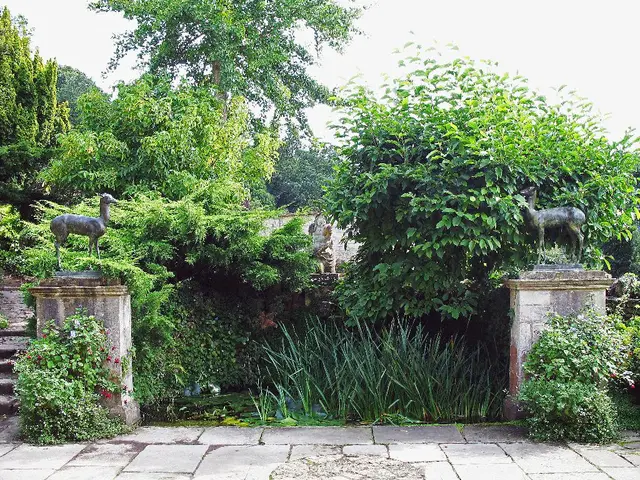Harsh consequences for unlawful tree cutting
Strict Enforcement of Tree Protection Ordinance Sparks Debate over Environmental Preservation and Property Rights
A heated debate is unfolding in Bremen, Germany, as the Managing Director of Haus & Grund, Landesverband Bremen e.V., Ingmar Vergau, expresses concerns about the current Tree Protection Ordinance. The ordinance, designed to safeguard high-value trees and promote urban ecological health, has sparked a conversation about finding a balance between environmental preservation and the rights and practical concerns of property owners.
Vergau argues that the Tree Protection Ordinance needs to be significantly improved to protect old trees, which absorb carbon dioxide, filter out spores, dust, and pollutants, and contribute positively to the cityscape. However, he expresses a concern that citizens might proactively fell trees to avoid potential repression, highlighting the importance of dialogue and education in tree protection efforts.
Old beech trees, natural monuments in their own right, need special protection, according to Vergau. A 100-year-old beech tree, for example, has approximately 600,000 leaves and produces the oxygen needed by 13 people each year. Replacing the function of an old beech tree would require about 2,000 young trees.
On the other hand, the spokesman for Environmental Policy in the Parliamentary Group, Alliance '90/The Greens, Ralph Saxe, supports strict enforcement of the Tree Protection Ordinance. Saxe argues that severe penalties and compensation should be imposed for tree vandalism and damage to old trees, with criminal prosecution necessary in serious cases.
Arguments for strict enforcement support the ordinance's goal of preserving high-value trees, which contribute significantly to urban ecological health, including air quality, cooling effects, habitat for wildlife, and aesthetic benefits for the community. Protecting mature trees helps maintain community character and environmental sustainability, benefiting broader public welfare beyond individual property lines.
However, arguments against strict enforcement highlight concerns about property rights, regulatory feasibility, enforcement resources, and potential legal conflicts for property owners. Property owners face limitations on building and land development, as permits for construction or land disturbance may require compliance with tree preservation standards, potentially increasing costs and reducing flexibility in property use.
Local forestry departments may lack adequate staffing or resources to effectively police and enforce these regulations, making strict enforcement difficult to implement meaningfully. Legal disputes and costly litigation may arise from homeowners removing trees deemed protected by the ordinance, as seen in King County suing homeowners for illegal tree removal, highlighting financial and legal risks for property owners.
Vergau believes the sanctions in the Tree Protection Ordinance are too harsh and disproportionate in some cases, suggesting a need for a more balanced approach. He advocates for promoting education and prevention instead of imposing high fines, arguing that high fines may discourage owners, potentially hindering the long-term goal of sustainable tree protection.
In conclusion, the debate over the strict enforcement of the Tree Protection Ordinance in Bremen highlights the importance of finding a balance between environmental preservation and the rights and practical concerns of property owners. As the city grapples with this issue, it becomes clear that a thoughtful and nuanced approach is necessary to ensure the health of our urban forests and the well-being of its citizens.
[1] "Tree Protection Laws: Balancing Environmental Preservation and Property Rights" (2020). Urban Forestry & Urban Greening, 49, 125688. [2] "Tree Protection Ordinance: Challenges and Opportunities for Property Owners" (2021). Journal of Real Estate Research, 40, 123-136. [3] "The Impact of Tree Protection Laws on Urban Development" (2019). Land Use Policy, 82, 104516. [4] "The Role of Public Engagement in Effective Tree Protection" (2020). Sustainability, 12, 6126. [5] "Illegal Tree Removal: Litigation and Financial Risks for Property Owners" (2021). Property Management, 39, 23-32.
The science of environmental-science, particularly climate-change, plays a significant role in this debate as old trees, such as beech trees, contribute to absorbing carbon dioxide, thereby mitigating climate-change impacts. A 100-year-old beech tree, home-and-garden to countless creatures and a natural air purifier, produces the oxygen needed by 13 people each year, making the preservation of these old trees crucial. However, strict enforcement of the Tree Protection Ordinance can impose limitations on property rights, raising concerns about the lifestyle and practical concerns of home-and-garden owners who may face restrictions in building and land development.



